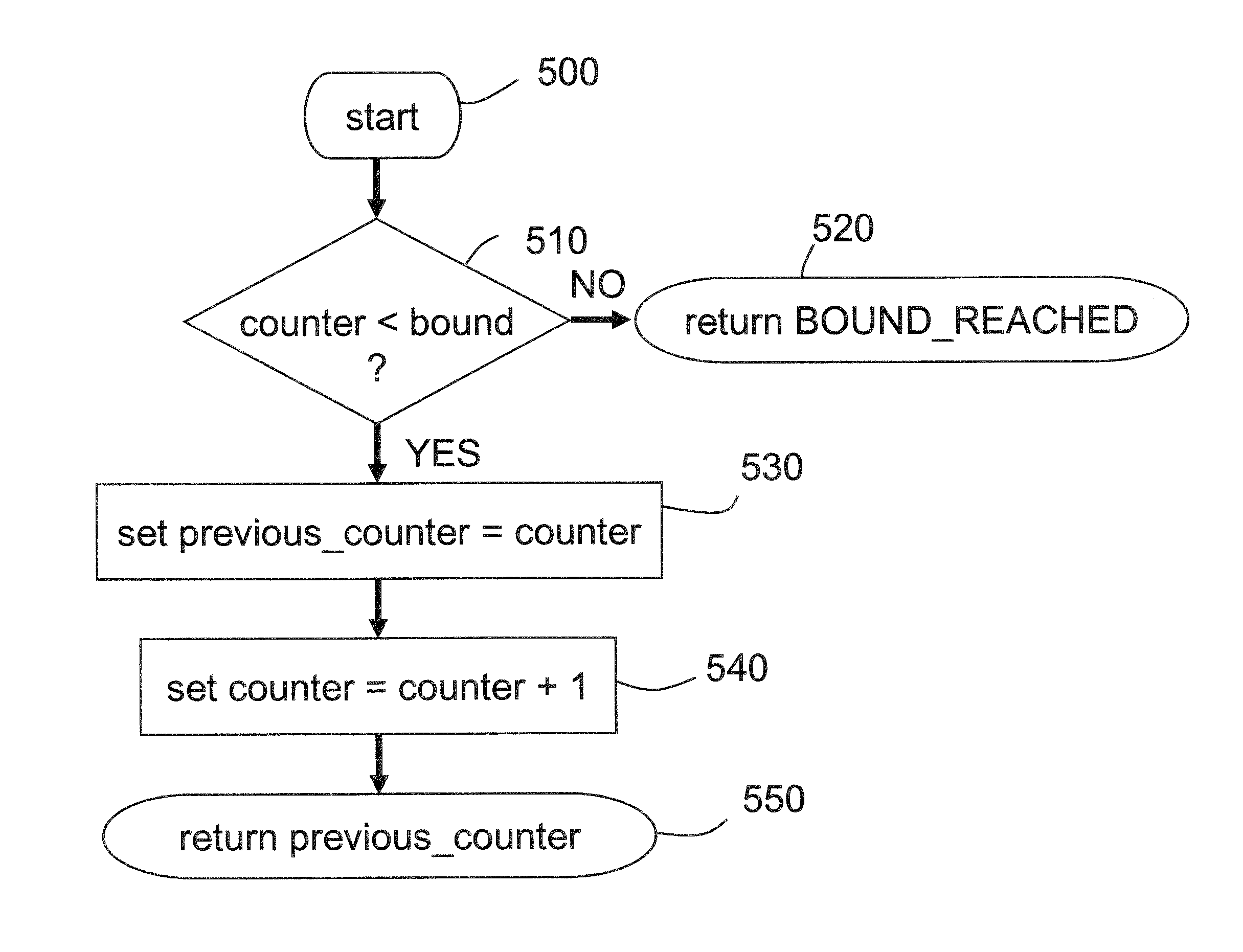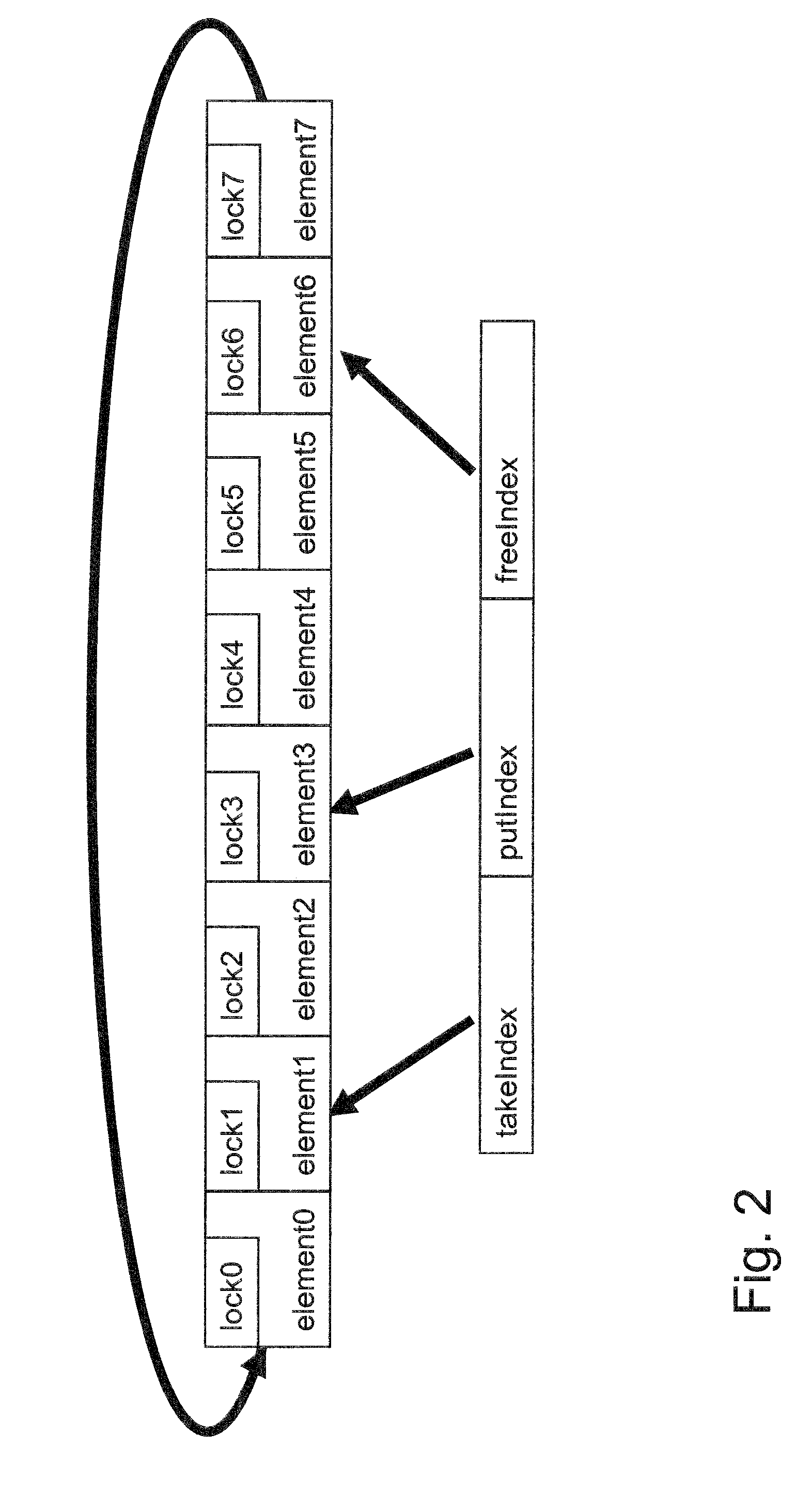Fast concurrent array-based stacks, queues and deques using fetch-and-increment-bounded and a ticket lock per element
a queue and queue technology, applied in the field of computer systems, can solve the problems of inefficient algorithms, common performance bottlenecks, and no practical non-blocking implementation of array-based stacks or circular queues, and achieve the effect of improving the operation of the concurrent array-based data structur
- Summary
- Abstract
- Description
- Claims
- Application Information
AI Technical Summary
Benefits of technology
Problems solved by technology
Method used
Image
Examples
Embodiment Construction
[0031]The methodology of the present disclosure is described with respect to three array-based data structures: queue, stack and deque. It should be noted, however, that the present methodology is not limited to only those data structures. A producer thread is known here as a putter. A consumer thread is known as a taker. A queue is stored in an array as a bounded circular-buffer using two indices, putIndex and takeIndex. In a queue, elements are put into and taken from the queue in first-in-first-out (FIFO) order. A stack is stored in an array as a bounded buffer using a single index TopIndex. In a stack, elements are put into and taken from the stack in last-in-first-out (LIFO) order. A double-ended queue is known as a deque. A deque is stored in an array as a bounded buffer using 4 indices, putBottomIndex, takeBottomIndex, putTopIndex and takeTopIndex. In a deque, elements are put into and taken from each of the two ends of the deque.
[0032]According to one embodiment of the prese...
PUM
 Login to View More
Login to View More Abstract
Description
Claims
Application Information
 Login to View More
Login to View More - R&D
- Intellectual Property
- Life Sciences
- Materials
- Tech Scout
- Unparalleled Data Quality
- Higher Quality Content
- 60% Fewer Hallucinations
Browse by: Latest US Patents, China's latest patents, Technical Efficacy Thesaurus, Application Domain, Technology Topic, Popular Technical Reports.
© 2025 PatSnap. All rights reserved.Legal|Privacy policy|Modern Slavery Act Transparency Statement|Sitemap|About US| Contact US: help@patsnap.com



